Why Laid-back Parents Raise Happier and Healthier Kids
Tom Hodgkinson, author of How to Be Idle and The Freedom Manifesto, is described by philosopher Alain de Botton as having written, “the most counter-intuitive but most helpful and consoling child-raising manual I’ve yet read”. Having purposefully avoided reading child raising manuals, with the exception of Baby Love, which was helpful to me in a practical sense, I loved the idea of a book that combined being horizontal with parenting.
I hate the idea of being so worried about Benedict that I can’t take him to the park, or let him walk to school or play with sticks or whatever else could hurt him, injure him or not be good for him. I am appalled at the idea that I will have to watch him assiduously. I am also concerned about children who don’t know how to entertain themselves, who think that helping with the washing up is optional not expected, and that there shouldn’t be time for adults to be alone and not surrounded by children and their demands. I wanted alternatives to the parenting I frequently see around me, an alternative to the tyrannical infant ordering the lives of its parents.
My interest in The Idle Parent was sparked by the visit to Australia of Lenore Skenazy, author of Free Range Kids. What most struck me was the outrage of parents to her idea of take your kids to the park and leave them there all day. How completely outrageous! What an idea! Leave them alone! How revolutionary! Skenazy’s visit sparked off another round of public commentary on raising children, modern life and parenting. So to Tom Hodgkinson and The Idle Parent.
Once I had my hands on the book, I happily read the manifesto. It contains sensible ideas, like rejecting the idea that parenting requires hard work, that parents should lie in bed as long as possible, and that time is more important than money. Great! Not working too hard, staying in bed and happily embracing time with the children.
The central thesis of The Idle Parent is that contemporary ideas of life and parenting are founded in the precept that children need to be moulded and improved. This notion is informed by the Elizabethan idea, Hodgkinson argues, that the child is waiting to be formed into an ‘ideal’ of perfection. Taken together with modern competition and the Protestant work ethic; the idea of perfect children is threatening to crush childhood by forcing parents into ‘improving’ their children with ‘organised team sport’, school, over-stimulation and over-engineered experiences which results in huge stress for all involved. These patterns of thought also confine children to a weak position where they cannot think for themselves, are overly dependent on adults and are only being prepared for their own time on the treadmill of the wage slave.
Hodgkinson’s ideas of The Idle Parent, reflect his own experience and are, in part, derived from his interpretation of the works of Rousseau and Locke, who argued in various texts for leaving children alone and to their own devices. In short in letting them be free. This does not, however, mean that the parents are doing all the work and the children are running wild, far from it. In Hodgkinson’s world of idle parenting, the parent is able to be idle because they have freed themselves, and their family, from the relentless treadmill of materialism and capitalism. Bring back child labour, he cries! By this he means, do not do everything for the child so that they are helpless. Do not make work sound like suffering but organise yourself so that children help and that chores are fun. Play music, take turns, create games out of things that have to be done. Give children responsibility.
While not a path open to us all, he exhorts us to spend more time at home, and less time at work; particularly when the children are little. This provides more time for sleep, meaning you will be less tired and likely to be irritated and cranky and also more time for you to be idle. This does imply a substantial amount of thrift and doing without, but along the way Hodgkinson provides money saving ideas, like not buying expensive battery operated toys, making things at home and living in the country. Like I said, options not always open to us all. Saving money by not buying things children don’t really need is however, something that most parents could easily do.
The key to idle parenting is to get rid of whingeing. All parents want this. In Hodgkinson’s world, the fastest way to achieve this is not to whinge yourself. If your child does not hear you complaining about washing up or chores or work, then they won’t complain either, he argues. Especially, little children who hear and absorb everything you DO much more than what you say. Do it lightly, play music, have fun. Don’t tell them what to do, ask them to join in. Better still, Hodgkinson says, is to teach them how to get their own juice, breakfast or whatever they need so you can stay in bed – a strategy he employs with some success by his own account.
Hodgkinson is a huge fan of children roaming in packs. If the children are to leave you alone to be idle, they must be engaged in something else, or with someone else. He describes his ideal as a party in a field. Adults drinking in a marquee at one end and flocks of children cavorting at the other end. Everyone enjoying themselves. No nagging, hovering, and no whingeing about being bored.
If I have to take issue with the Idle Parent, it is with the relentless middle class assumptions that underlie what is an otherwise enjoyable approach to dealing with the conflicts thrown up by parenting. Working through the book, I found that as Hodgkinson shifted from explaining his ideas to describing how to implement them he was describing a world that was not within the reach of most people, certainly not most people outside the comfortable environment of the southern counties of England. The ideas in The Idle Parent become more difficult to implement, and less practical for all but a few. He argues for a rejection of materialism and the capitalist impulse to acquisition. He also thinks it is a good idea to live in the country, keep animals and home school your children. His reasons for this are all based on a sort of anti-puritan movement which would see children made resilient and robust by discovering things themselves – he waxes lyrically for several pages about activities that strike fear into people – let children outside of the gaze of adults play with matches, build cubbies, climb trees, keep pets. Drag your children out of the house away from television and the internet. End all organised activities, don’t trap them in the car and let children explore and be free. Down with School is the title of one chapter.
Hodgkinson tempers these ideas with practical advice on things like saying no. He quotes Rousseau who writes; “Let your ‘No’ once uttered, be a wall of brass against which the child may exhaust his strength some five or six times, but in the end he will try no more to overthrow it.” Hodgkinson also suggests having only a few important rules so you need say no less often.
Taking the best of Hodgkinson’s concepts, to embrace, really embrace, being an idle parent there are a few ideas to let go of first. You need to be there, you need to not care what anyone thinks, you need to ignore reports from school, reject television or at least limit it to as few hours as possible. All sound advice but best started when the children are babies and not after as Hodgkinson acknowledges.
Putting aside some of the impracticalities of Hodgkinson’s implementation of his ideas, the Idle Parent advocates children fitting in. Parents doing what they want to do and children following them – in most existing families this would be an adjustment. I will start today. I will also say no and mean it when the time comes. I will try to let go of my fear of the sleep-over and embrace children roaming through my backyard because while they are doing that, I can be inside drinking tea and reading a book.

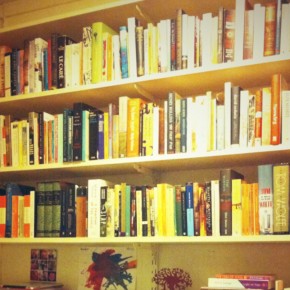
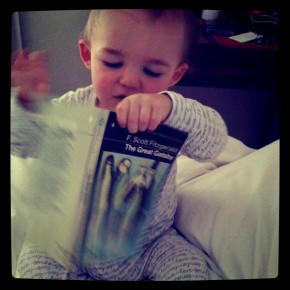
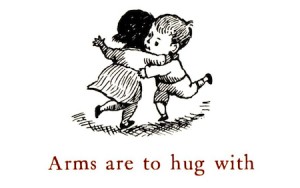



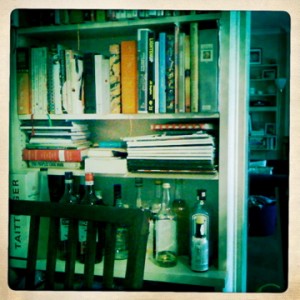

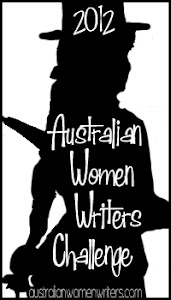
Recent Comments